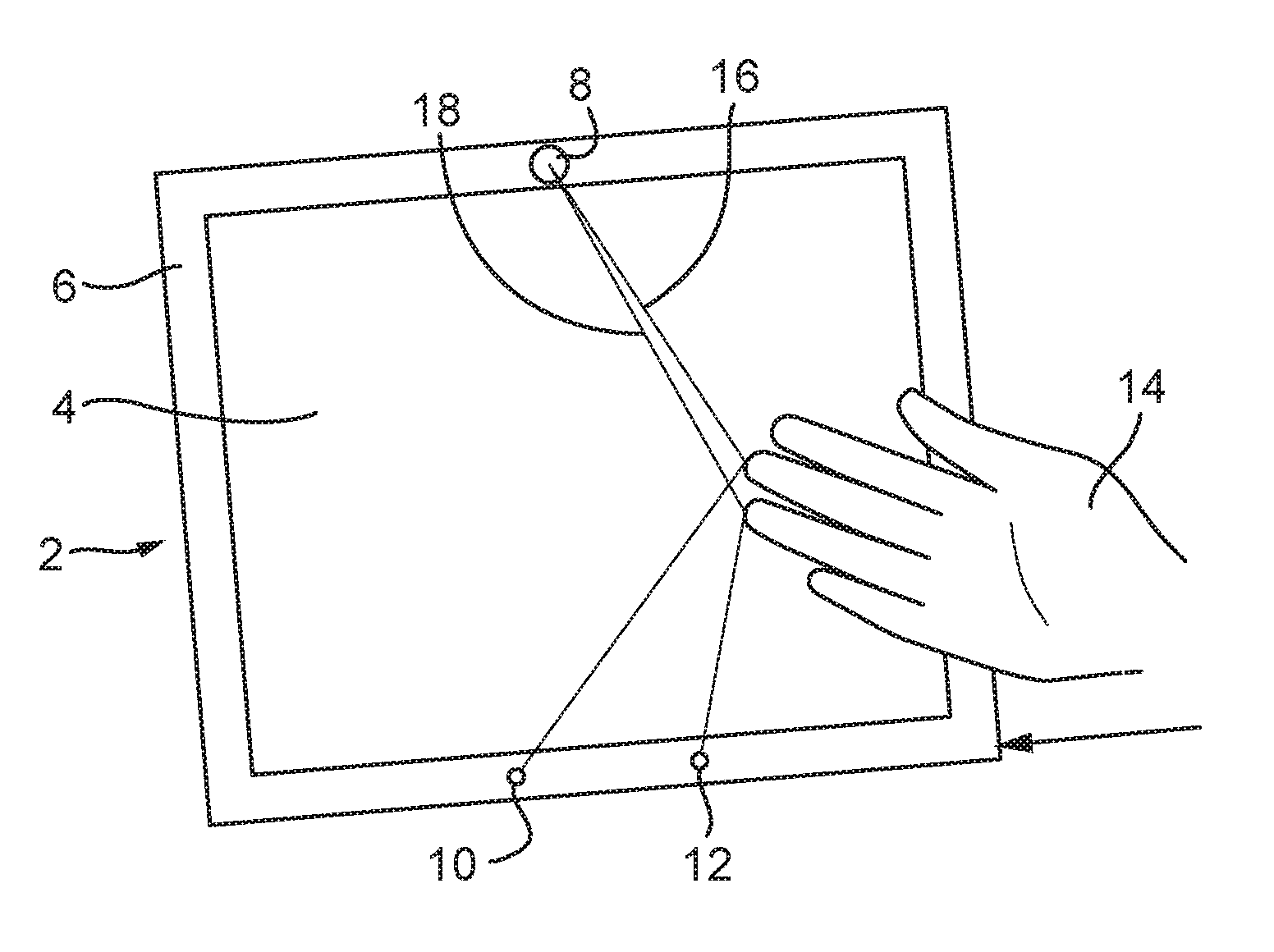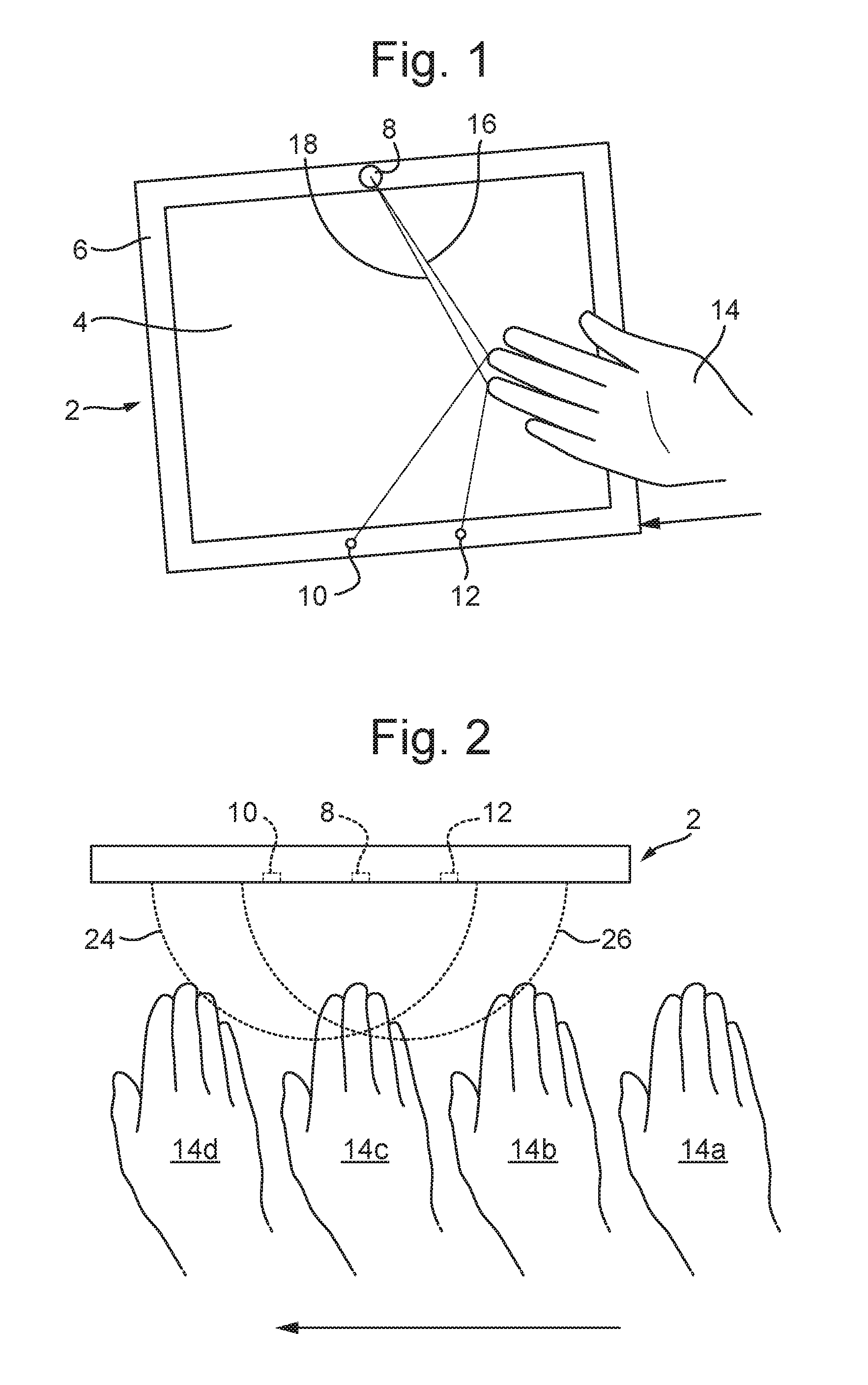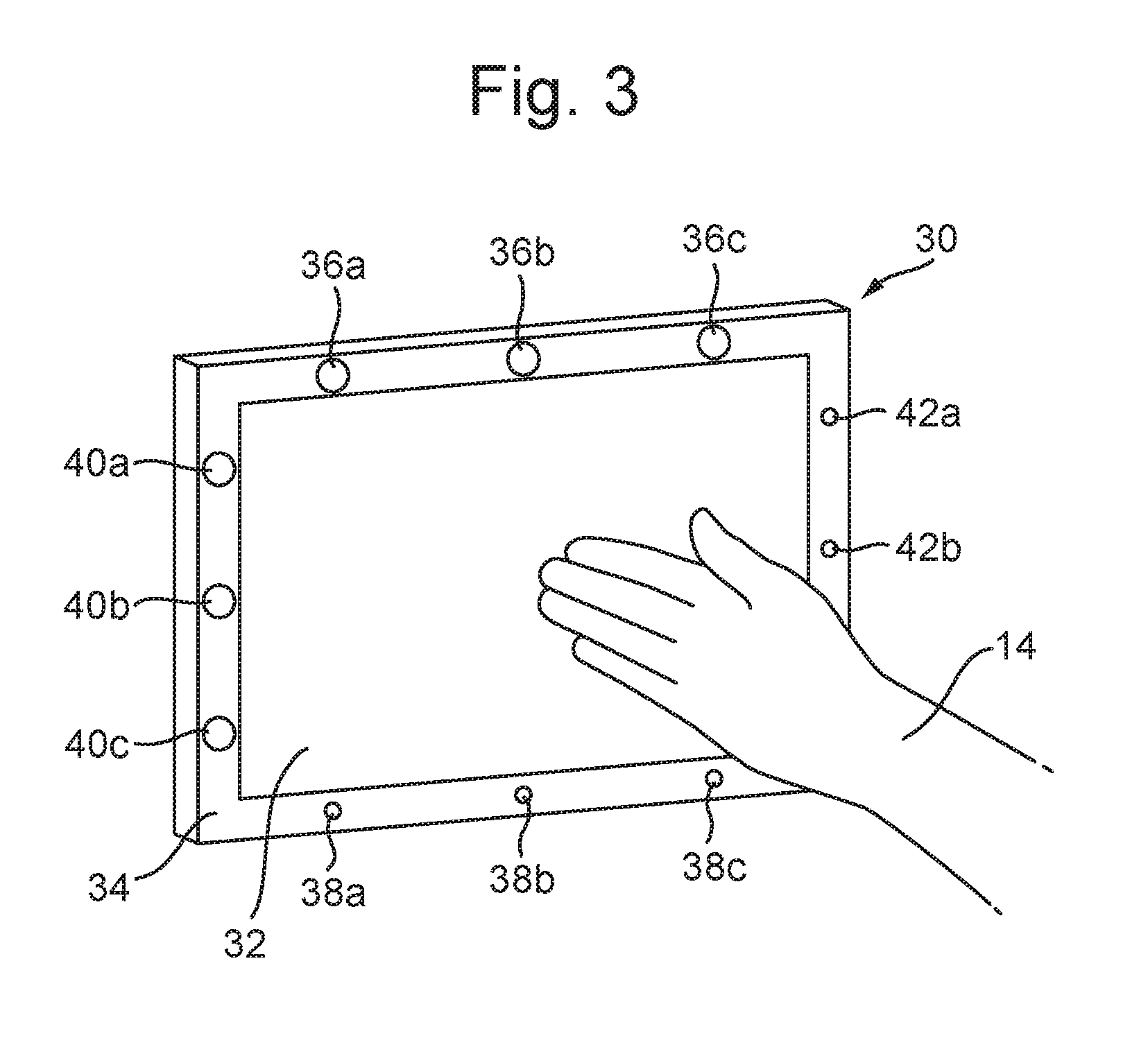Control using movements
a technology of controlling movement and movement, applied in the field of controlling movement, can solve the problems of high computational processing level, undesirable electrical power, and difficulty in discerning the direction of objects using baseline time-of-flight or array based methods, and achieves the effect of small separation, convenient defining, and convenient determining movemen
- Summary
- Abstract
- Description
- Claims
- Application Information
AI Technical Summary
Benefits of technology
Problems solved by technology
Method used
Image
Examples
Embodiment Construction
[0166]FIG. 1 shows a gesture-responsive display unit 2 having a stand to the rear (not visible) which keeps it fixed at a slight incline to the vertical. It comprises a flat-panel LCD screen 4, suitable for showing digital photographs, mounted in a frame 6. The top horizontal portion of the frame has, centrally flush-mounted therein, an ultrasound transmitter 8. The bottom horizontal portion of the frame has, flush-mounted therein, a left ultrasound receiver 10 and a right ultrasound receiver 12, located respectively to the left and right of centre.
[0167]In use the transmitter 8 is arranged to transmit ultrasonic pulses at periodic intervals (e.g. every 1 / 100 seconds). The pulses might all be the same, or could, for example, alternate between a higher and a lower frequency. Each pulse lasts for example 10 micro-seconds. The left and right receivers 10, 12 each receive the signals. An inbuilt processor and associated circuitry coordinates the timing of the transmit signals, and also ...
PUM
 Login to View More
Login to View More Abstract
Description
Claims
Application Information
 Login to View More
Login to View More - R&D
- Intellectual Property
- Life Sciences
- Materials
- Tech Scout
- Unparalleled Data Quality
- Higher Quality Content
- 60% Fewer Hallucinations
Browse by: Latest US Patents, China's latest patents, Technical Efficacy Thesaurus, Application Domain, Technology Topic, Popular Technical Reports.
© 2025 PatSnap. All rights reserved.Legal|Privacy policy|Modern Slavery Act Transparency Statement|Sitemap|About US| Contact US: help@patsnap.com



